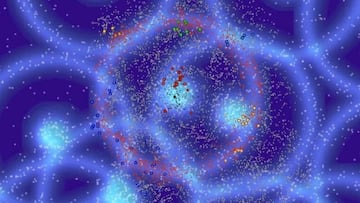Space
This is the galaxy bubble seen in the Milky Way, which could be a remnant of the Big Bang
The find could be a fossilized remnant of the Big Bang, the origin of the universe.

The vastness of the universe continues to produce surprising discoveries, such as the one we are discussing today. It is a huge bubble of galaxies that would have formed 1.8 billion years ago, located 820 million light-years from our planet and with a diameter of one billion light-years. It was unexpectedly found by an international group of astronomers at the University of Hawaiʻi led by Astronomer Brent Tully and already has a name: Ho’oleilana, a term drawn from the Kumulipo, a Hawaiian creation chant evoking the origin of structure.
What is this bubble really?
The Bubble is composed of several clusters of galaxies, each with 10 clusters, and would have an extension of 200 million light-years. At the center of the bubble is the Boötes Supercluster and the Boötes Void, a massive empty spherical region, which occupies a space of 330 million light-years.

This phenomenon is not unusual, but it is surprising because of its proximity to the Milky Way. It is a fossilized sound wave, but its size is larger than usual, leading to the conclusion that the universe is expanding faster than previously thought. It is even speculated that it could be the fossilized remains of nothing less than the Big Bang.
“We were not looking for it. It is so huge that it spills to the edges of the sector of the sky that we were analyzing,” astronomer Brent Tully said in an official release. “As an enhancement in the density of galaxies it is a much stronger feature than expected. The very large diameter of one billion light years is beyond theoretical expectations. If its formation and evolution are in accordance with theory, this BAO is closer than anticipated, implying a high value for the expansion rate of the universe.” Tully’s team believes this may be the first time astronomers identified an individual structure associated with a BAO (Baryon Acoustic Oscillations).


